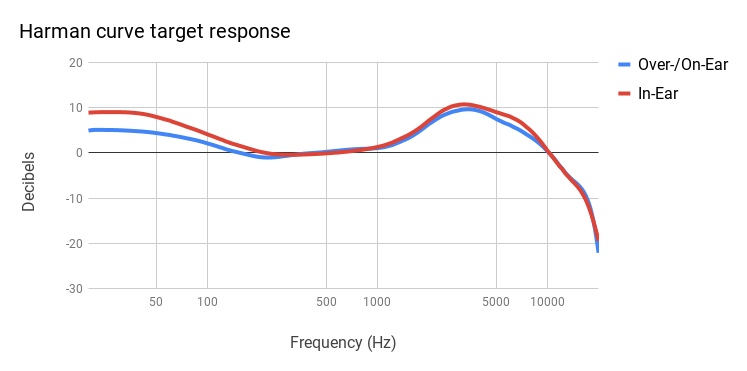SilverEars
Headphoneus Supremus
- Joined
- Sep 18, 2013
- Posts
- 14,455
- Likes
- 6,475
I wish there was more details in regards to placement of the frequencies of the different parts of the curve. I was looking at Rtings measurement methodology video, and they explain why the Harman curve is smoothly shaped. So, Harman curve is using a particular type of HATS (head and torso) dummy, and the turns out that way due to the dummy's head and torso shape they use after smoothing. And Rtings chooses to use diffuse field result from their dummy for their treble region, hence the wobbly looking target response. So, these target curves are based on the dummy that was used to obtain the target curve! quite interesting I say.Current Harman curves from here. Again, only intended for rough estimation purposes. Esp. if using a different HATS measurement system than the one employed by Harman.

I often go to a Korean website called 0dB for any interesting review/measurements I can get, and I've noticed that they use GRAS 45CA and they go over all the insights behind their measurements and their equipment which I found to be interesting read. Google translate to get English translations.
What I find interesting that 0dB points out is the difference between 45CA and HATS in how the response results.
https://www.0db.co.kr/BOARD_0DB/498388
I also find Speakerphone's measurement methodology an interesting read as well. He discusses ear sizes and the effects on consistency of measurements.
https://clarityfidelity.blogspot.com/2015/05/introduction-measurement-procedures.html
Articles on Soundstage website. Why Mini-DSP Ears measurements arn't reliable, etc..
https://www.soundstagesolo.com/index.php/features/152
https://www.soundstagexperience.com...se-menu/850-a-crisis-in-headphone-measurement
Last edited:




























